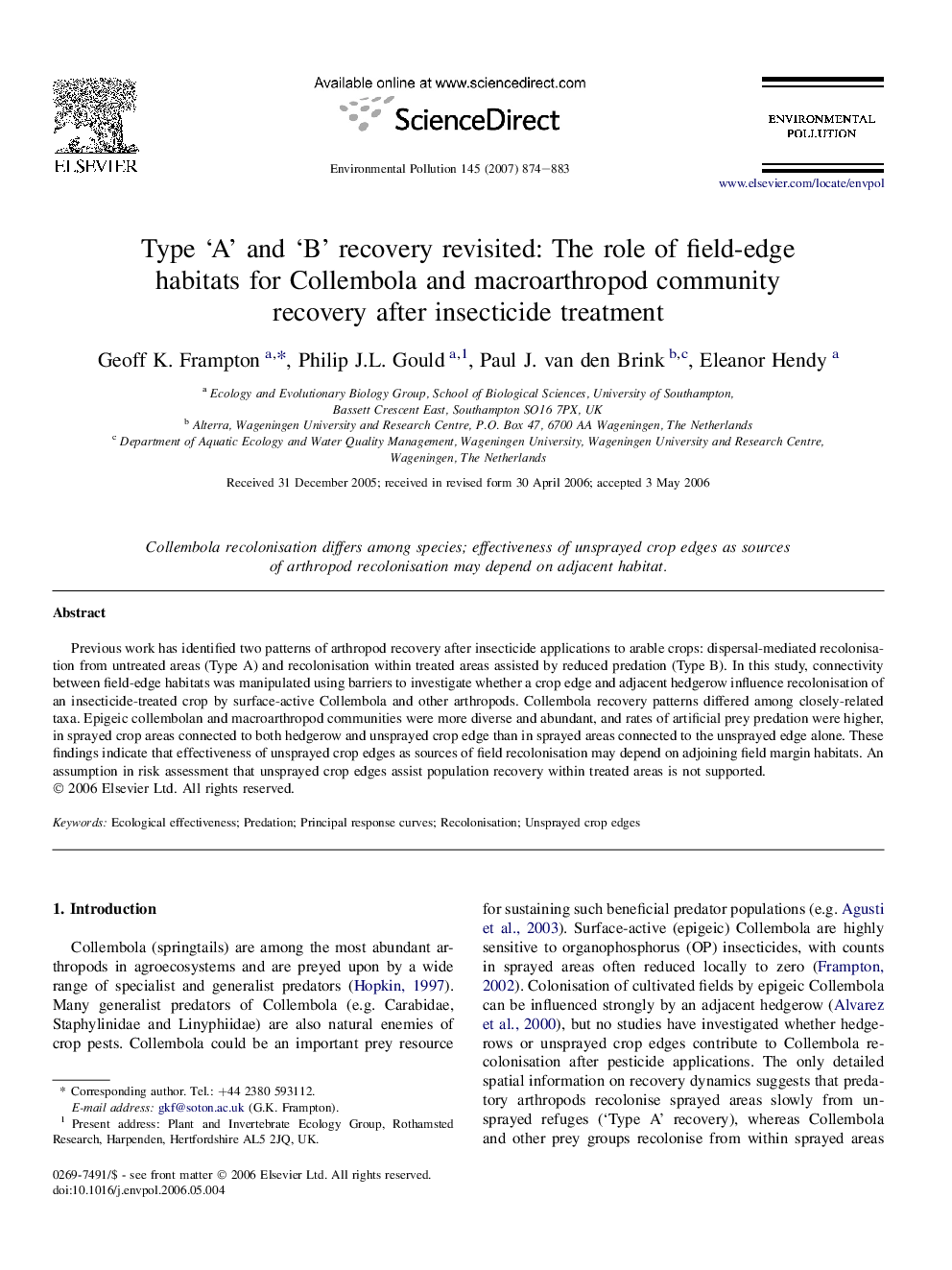| Article ID | Journal | Published Year | Pages | File Type |
|---|---|---|---|---|
| 4427856 | Environmental Pollution | 2007 | 10 Pages |
Previous work has identified two patterns of arthropod recovery after insecticide applications to arable crops: dispersal-mediated recolonisation from untreated areas (Type A) and recolonisation within treated areas assisted by reduced predation (Type B). In this study, connectivity between field-edge habitats was manipulated using barriers to investigate whether a crop edge and adjacent hedgerow influence recolonisation of an insecticide-treated crop by surface-active Collembola and other arthropods. Collembola recovery patterns differed among closely-related taxa. Epigeic collembolan and macroarthropod communities were more diverse and abundant, and rates of artificial prey predation were higher, in sprayed crop areas connected to both hedgerow and unsprayed crop edge than in sprayed areas connected to the unsprayed edge alone. These findings indicate that effectiveness of unsprayed crop edges as sources of field recolonisation may depend on adjoining field margin habitats. An assumption in risk assessment that unsprayed crop edges assist population recovery within treated areas is not supported.
